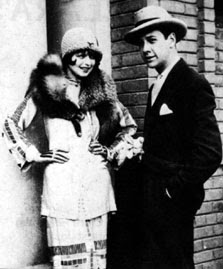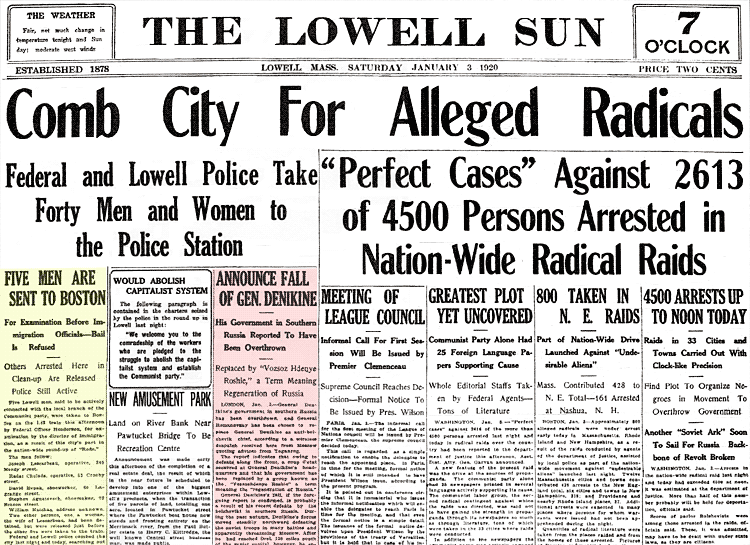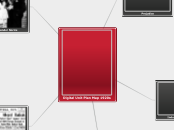
Digital Unit Plan Map 1920s

Prejudice
Instructional Objectives:
Students will analyze context, and perspectives of the series of events and aspects of prejudice in the 1920’s.
Students will understand the outcomes of actions of the Klu Klux Klan, Palmer Raids, NAACP, and many more issues involving prejudice in the 1920s and describe and analyze in detail in the foldable activity accurately.
Students will also examine the various acts against prejudice from the NAACP and other groups.
Students will be able to connect events and ideas from the past to today’s society and discussed in lecture and journal activities.
Assessment:
Formative: Progress Monitoring question & answer throughout lecture to ensure student comprehension and engagement; Progress Monitoring observation throughout student pair activity to ensure correct information and comprehension.
Summative: Completed foldable with the required aspects and information.
Teacher Activities
Lecture Prezi presentation and guided notes: The teacher will go through the short presentation with the class to explain various aspects included in the Prezi. The teacher will explain the presentation, make connections to students’ lives, ask a variety of levels of questioning, and play the various videos in the Prezi.
Student Activities
Students will be given a guided notes handout in order to easily follow along with the Prezi presentation, think critically by answering the included questions, and use various styles of learning to comprehend the content.
Students will work in pairs to create a foldable that will explain an aspect of prejudice from this time period. The center will title the event or situation, the top-left will describe what happened or the climate, the top-right will describe who was involved, the bottom-left will describe how or if this prejudice situation ended, and the bottom-right will illustrate a visual aid describing the situation.

Industrialization
Instructional Objective:
Students will understand the various technological developments of the early twentieth century.
Students will understand and analyze the affects of many important technological industrialization.
Students will complete the reading assignment about technological development.
Students will complete the foldable-guided reading assignment at 90% accuracy.
Assessment:
Formative: Progress Monitoring observation in vocabulary activity, reading, and work in the foldable
Summative: Identifying Main Ideas foldable.
Teacher Activities
BEFORE READING: the class will be given time to look over their vocabulary list. The class will highlight the vocabulary that will be within the reading, which will be listed by the instructor on the projector. By quickly gauging the students, the instructor will see if the class needs time to complete the given vocabulary list. If incomplete, the class will have ten minutes to work on the highlighted words. If the majority of the class has completed the vocabulary, the class will quickly go over the list and move into creating the foldable. (10 minutes). Students will then follow instructions from the instructor on creating the “Identifying Main Ideas” foldable (page 86), which will also be displayed on the projector.
The instructor will ensure students are creating the foldable correctly by walking around the room, having a completed foldable, and helping any students who is in need.
DURING READING: Students will be given the opportunity to complete the reading alone or with a partner. Students will be advised to read each paragraph, stop, reflect, and find the main idea of each section.
AFTER READING: The class will work independently or with a partner to complete the foldable. Each section will be describing the given industrial invention and its’ lasting affects. The front flap will have the invention. The inside will describe who invented it, what it is, how it works, what it affecting, and how it changed society.
Student Activities
Students will be actively participating in the journal, vocabulary, reading, and foldable. As previously described, the students will work with the class, alone, or with a partner.

Prohibition
Instructional Objective:
Students will analyze the given primary source Political cartoons of the ideas involving prohibition and attitudes of the 1920s.
Students will be able to reorganize their work with the cartoon into a graphic organizer and explain the information to the class.
Assessment:
Formative: The teacher will assess students throughout the activity. By walking around and listening to the groups discuss, asking questions, and looking over work as it is completed, the teacher will ensure students are understanding and working in the right direction.
Summative: The teacher will collect the primary source worksheet from each student as a graded assessment. The students will also be given a grade on the graphic organizer and participation for the presentation. It will be assessed regarding the accuracy of information, level of depth of thought or understanding, and representation of the political cartoon.
Teacher Activities
Students will be organized into eight groups. Each group will receive a political cartoon. Students are instructed to complete a political cartoon analysis worksheet and to become masters of the given cartoon. Students will then create a larger, poster foldable presentation to represent and explain their political cartoon to be shared with the class. The center will be the title of the cartoon, the top left corner will be vocabulary associated with the cartoon, the top left will be what is happening, the bottom left will be a visual representation to explain the cartoon (different from the given cartoon). The students will have 20 minutes or as needed to complete the worksheet and foldable (foldable drawn in resources). This large foldable will be briefly explained to the class, which will take another 20 minutes. While students are presenting, other students will be required to write at least three questions total, to be used as a lesson closure.
Student Activities
Students will work in groups to analyze and complete the political cartoon worksheet. They will create the large foldable, present this to the class, and explain the representation to the class. Students will be engaged throughout the given group activities, worksheet, and organizer.

Gender Norms
Instructional Objective:
Students will analyze the social norms of each gender in the 1920s.
Students will use the web-based simulation in order to explore the changing experiences of men and women of the twenties.
Students will reflect on the various experiences in the simulation in relation to the changing popular culture and technologies.
Assessment:
Formative: The teacher will gauge the student learning throughout the lecture by engaging the students in question and answer to ensure comprehension. During the simulation, the teacher will go around to ensure students are working and making decisive social decisions in the interactive game.
Summative: The recording of student success throughout the simulation will serve as an assessment of student comprehension regarding the social gender roles of the 1920s. The exit slip will also serve as a reflection and comprehension activity.
Teacher Activities
The students will view a short lecture presentation regarding the changing women’s roles of the 1920s. They will take brief guided notes regarding the information in order to prepare for the simulation. They will use the given information as clues to understand women’s daily life and men’s experiences as well.
Student Activities
Each student will engage in a web-based simulation that will reaffirm and promote social constraints on both genders of the 1920s. At the beginning of the simulation, students will use their described characters from the anticipatory set activity. They will chose a gender, location, outfit, and answer various questions regarding the approved behavior of the time. The simulation is designed to be fun and entertaining, while reaffirming the information of the slide and social roles. They will record their success in following the social constraints of the time period.

Red Scare
Instructional Objective:
Students will understand opposing perspectives regarding civil liberties of the 1920s.
Students will analyze and use the primary sources to support various perspectives regarding civil liberties in a debate format.
Students will participate in a debate supporting or refuting civil liberties using primary sources.
Assessment:
Formation: Informal assessment includes progress monitoring and checking for understanding. Throughout the group work, the teacher will move from group to group to ensure students are on task, in the correct direction, and ask questions to gauge deeper thinking/questioning.
Summative: formal assessment includes the collection of the guided debate. Students will be given a grade out of twenty based on the completion, accuracy, and depth of analysis.
Teacher Activities
First, I will briefly discuss some of the important aspects of the Red Scare to activate students’ prior knowledge. Talking points seen in “Resources”
The class will be divided into groups of four. The students will receive the two primary sources. They will divide their group into pairs to complete the guided debate worksheet. Once they have completed the worksheet for their assigned primary source, they will participate in a debate with the other partnership at the table. After the debates, students will reflect and finish the worksheet by recording the opposing perspective on the issue and complete the reflection questions.
Student Activities
Students will listen, understand, and participate in the mini lecture to introduce the Red Scare. They will participate in the lecture by question and answering method throughout the mini lecture.
Students will be divided into groups of four. In their groups, they will pair off and analyze the given primary sources through completion of the guided debate worksheet. Students will read the primary sources, complete the chart, and prepare for a mini debate with the group at their table. Students will then attempt to come to a consensus in their group. Each portion of the activity is supported through the primary source.
